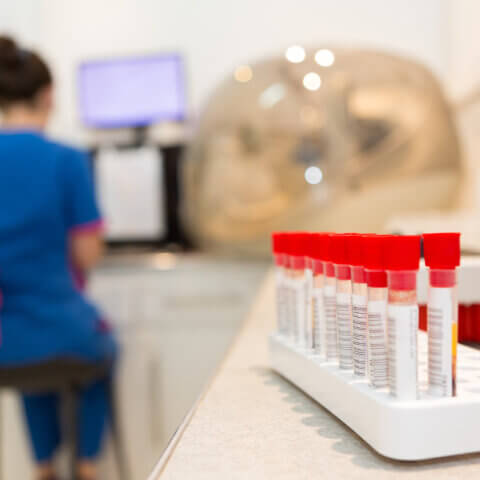Last Updated: October 23, 2024, 2 pm UTC
Laboratory developed tests (LDTs) and in vitro diagnostics (IVDs) play a critical role in modern medical care. According to the US Centers for Disease Control and Prevention (CDC), 14 billion laboratory tests are ordered each year and an estimated 70 percent of medical decisions are based on the results of these tests.1 Thus, diagnostic tests—and their validity—have a substantial impact on public health and the harms to patients from both false positive and false negative results can be significant. Given the increasing importance of LDTs in healthcare, the US Food and Drug Administration (FDA) announced on April 29, 2024 a final rule amending its oversight of these tests.2
In this blog, we review the existing regulatory framework for LDTs and the agency’s rationale for changing this regulation.
About LDTs
LDTs are diagnostic tests that are not commercially distributed to other laboratories, but rather are developed, validated and performed in-house by individual laboratories. LDTs range from routine tests such as blood counts to more complex molecular and genetic tests for cancer, heart disease, and rare and infectious diseases. These tests provide physicians with the information needed to diagnose and treat patients and are essential to the practice of all areas of medicine. Many LDTs are critical for providing patients with timely access to accurate and high-quality testing for conditions where no commercial tests exist or where existing tests fail to meet current clinical needs. In fact, LDTs are typically developed at the request of, and in close collaboration with, clinical caregivers.
Current regulatory framework for LDTs
FDA has traditionally considered an LDT to be an IVD that is intended for clinical use and that is designed, manufactured, and used within a single certified laboratory that meets the regulatory requirements under Clinical Laboratory Improvement Amendments (CLIA) to perform high complexity testing.
IVDs, including LDTs, are considered a subset of medical devices under section 201(h)(1) of the Federal Food, Drug, and Cosmetic Act (FD&C Act). From a regulatory standpoint, the key distinctions between LDTs and other IVDs are who manufactures them and who oversees them:
- LDTs are manufactured by laboratories and fall under the jurisdiction of the Center for Medicare & Medicaid Services (CMS). They currently are not subject to the same regulations as IVDs. Instead, they are subject to CLIA.
- IVDs are produced by device manufacturers that must comply with FDA pre-market approval and post-market controls.
FDA rationale changing LDT regulations
In the 1970s and 1980s, when the current regulatory framework was created, LDTs were typically low-risk, low-volume tests used for a local patient population. FDA traditionally exercised “enforcement discretion” over LDTs, essentially carving out an exemption for IVDs developed in laboratories.
With advances in technology and the advent of targeted therapies and precision medicine, the LDT landscape has changed. Laboratories can now accept specimens from across the country and often perform large volumes of tests. In addition, there are now LDTs for higher-risk testing that guide a broad range of critical healthcare decisions, including cancer screening.
The higher volume and risk of LDTs today has raised concerns about whether patients and providers can rely on these tests for decision-making. These concerns include high rates of false negatives and false positives, both of which can cause harm to patients, and insufficient clinical validation. False negatives can lead to disease progression, in some cases without the opportunity for life-saving treatment. False positives can delay diagnosis and treatment of the true disease or condition, lead to unwarranted and sometimes risky interventions, and cause needless distress.
Moreover, many LDT systems made by laboratories today are functionally the same as those made by manufacturers of IVDs. In essence, single certified laboratories may have been able to traverse an unofficial alternative pathway to market whereby tests are launched as LDTs to avoid IVD regulations. This alternative pathway puts IVD manufacturers at a competitive disadvantage and may even discourage innovation.
FDA’s final rule for LDTs
In March 2023, FDA published a proposal that would end “enforcement discretion” and bring LDTs under the same regulatory umbrella as IVDs. The final rule announced on April 29 2024 amends the definition of IVDs to be devices under the FD&C Act, including when the manufacturer is a laboratory. Under this rule, LDTs will also be subject to FDA medical device regulatory requirements, with no automatic “grandfathering” provision and some exemptions.
Recognizing the magnitude of this change to both industry and patients, the agency proposed a four-year schedule for ending its “enforcement discretion” for LDTs, with the goal of avoiding undue disruption in the testing market.
Key takeaway
With the announcement of the final rule, LDT manufacturers may benefit from partnering with an experienced medical device regulatory strategy team that can help them create a roadmap to IVD compliance.
The FDA final rule for LDTs exemplifies the continual evolution of the regulatory framework for medical devices and the need for manufacturers to stay up-to-date in a dynamic landscape, both in the US and around the world. To learn more about navigating uncertainty in the European IVD regulatory landscape, click here.
[1] Centers for Disease Control and Prevention. Strengthening Clinical Laboratories. Available at https://www.cdc.gov/csels/dls/strengthening-clinical-labs.html.
[2] US Food and Drug Administration. FDA Takes Action Aimed at Helping to Ensure the Safety and Effectiveness of Laboratory Developed Tests, April 29, 2024. Available at https://www.fda.gov/news-events/press-announcements/fda-takes-action-aimed-helping-ensure-safety-and-effectiveness-laboratory-developed-tests.

 Webinar
Webinar 


 Perspectives Blog
Perspectives Blog 